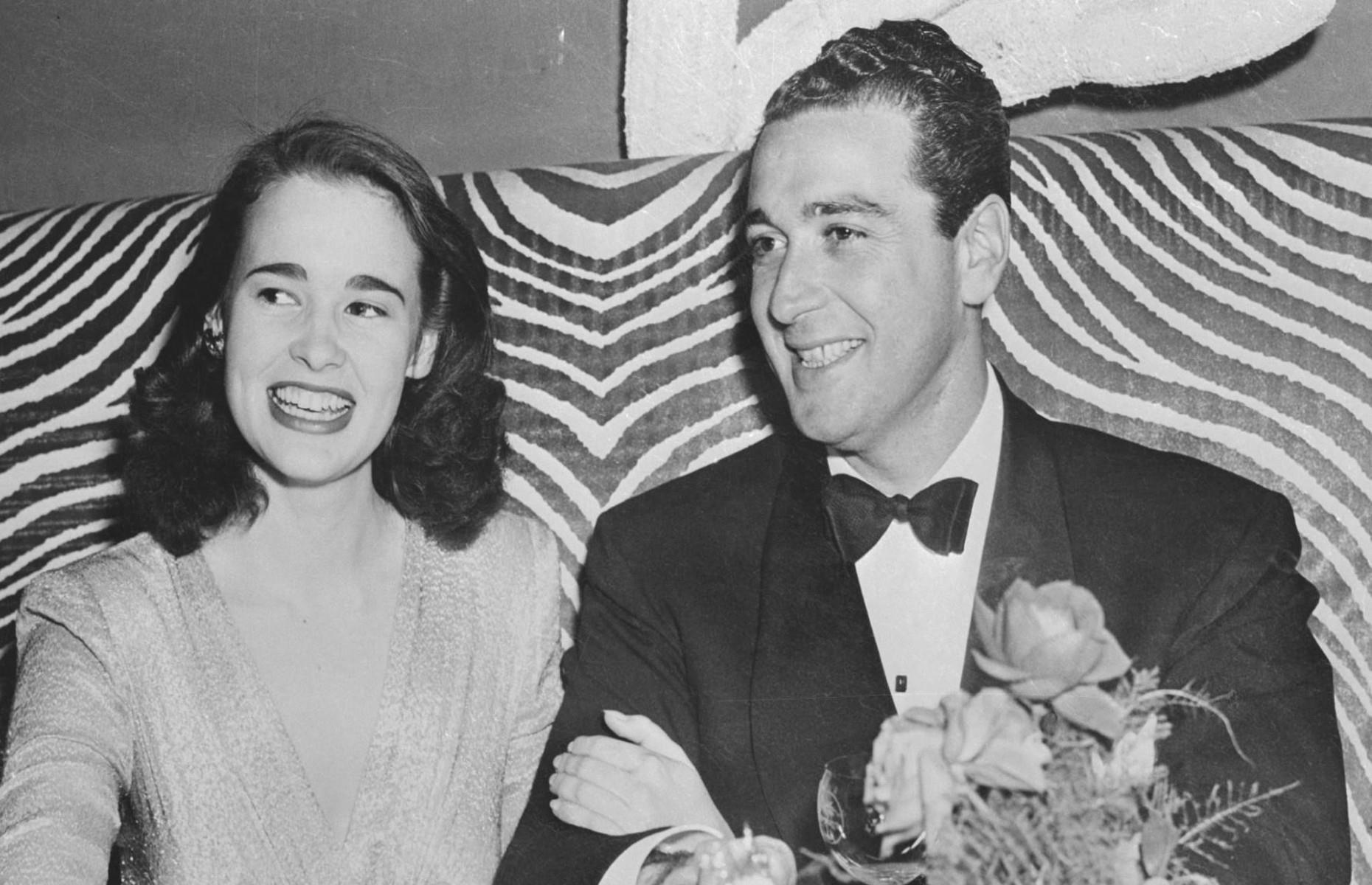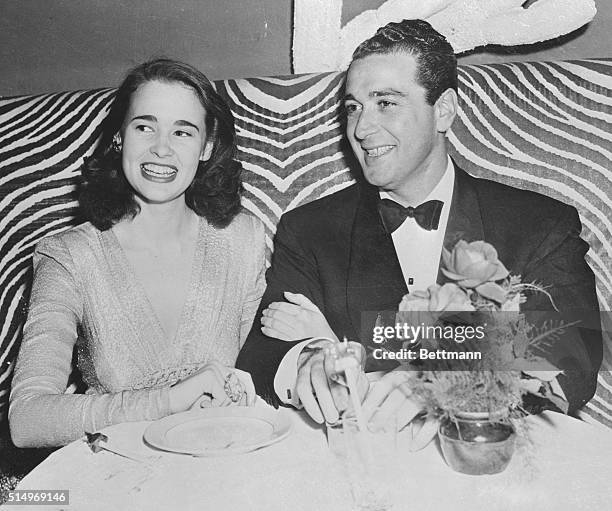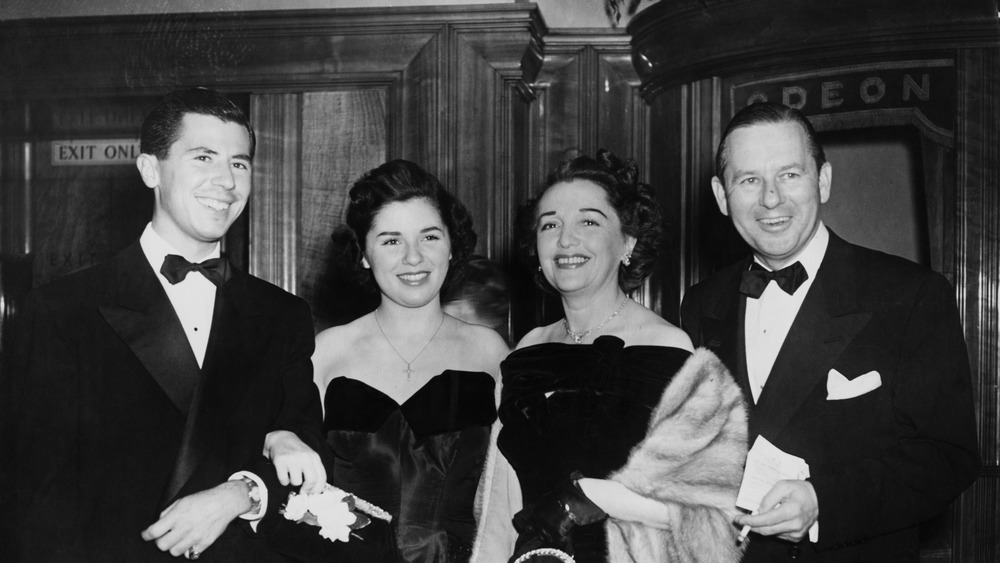The Vanderbilt Family: From Railroad Riches To Enduring Legacy
The Vanderbilt family name evokes images of immense wealth, grand mansions, and a bygone era of American industrial might. An American dynasty of Dutch origin, their story is a captivating saga of ambition, innovation, and ultimately, the challenge of sustaining an unprecedented fortune across generations. From their humble beginnings to becoming the richest family in the world, the Vanderbilts left an indelible mark on the nation's infrastructure, social fabric, and architectural landscape.
This article delves into the fascinating history of the Vanderbilt family, exploring their meteoric rise through shipping and railroad empires, their lavish lifestyle that defined the Gilded Age, the personal conflicts and social pressures that contributed to their eventual financial decline, and the enduring legacy that continues to shape American culture, philanthropy, and even media today.
Table of Contents
- The Origins of an Empire: Cornelius "The Commodore" Vanderbilt
- Cornelius Vanderbilt: A Brief Biography
- The Golden Age of Vanderbilt Wealth
- Opulent Mansions and Lavish Lifestyles
- Scandals and Social Pressures
- The Squandering of a Fortune
- Philanthropy and Lasting Contributions
- The Modern Vanderbilts and an Enduring Legacy
The Origins of an Empire: Cornelius "The Commodore" Vanderbilt
The story of the Vanderbilt family begins with its formidable patriarch, Cornelius Vanderbilt. Born in 1794 on Staten Island, New York, Cornelius started his career in humble circumstances, ferrying goods and passengers between Staten Island and Manhattan. His early ventures in the inland water trade quickly demonstrated his shrewd business acumen and relentless ambition. He earned the moniker "The Commodore" for his dominance in the shipping industry, building a vast steamboat empire that spanned the East Coast.
However, it was his foresight into the burgeoning railroad industry that truly cemented the Vanderbilt family's place in history. Recognizing the immense potential of this new mode of transportation, Vanderbilt strategically invested in and acquired smaller railroad companies. He rapidly worked his way into leadership positions, eventually gaining control over all railroad travel in and out of New York City. This strategic consolidation not only brought him immense wealth but also significantly impacted the geography of the United States, standardizing railroad procedures, timetables, and overall efficiency. At his death in 1877, Cornelius Vanderbilt's estate was valued at an astonishing $100 million, a sum equivalent to approximately $2.5 billion in today's currency. This colossal fortune laid the foundation for what would become the wealthiest family in the world.
Cornelius Vanderbilt: A Brief Biography
Cornelius Vanderbilt's life was a testament to the American dream, embodying the self-made man who built an empire from scratch. His relentless drive and strategic genius were unparalleled, transforming the economic landscape of the 19th century. Below are some key details about the founder of the Vanderbilt dynasty:
| Attribute | Detail |
|---|---|
| Full Name | Cornelius Vanderbilt |
| Nickname | "The Commodore" |
| Born | May 27, 1794, Port Richmond, Staten Island, New York |
| Died | January 4, 1877, New York City |
| Occupations | Steamboat Operator, Railroad Magnate, Entrepreneur |
| Known For | Building the Vanderbilt shipping and railroad empires; becoming one of the richest Americans in history. |
| Estimated Net Worth at Death (1877) | $100 million (approx. $2.5 billion today) |
| Family Legacy | Founder of the Vanderbilt family dynasty, which became the wealthiest family in the world. |
The Golden Age of Vanderbilt Wealth
Following Cornelius, his son William Henry Vanderbilt inherited the vast majority of the fortune and proved to be an equally astute businessman, further expanding the railroad empire. Under his stewardship, the Vanderbilt family's wealth continued to grow exponentially. At its peak, the family's fortune was so immense that it could be equivalent to an astounding $185 billion in today's value, solidifying their status as once the richest family in the world. This era, known as the Gilded Age, was characterized by unprecedented industrial growth, technological innovation, and a display of wealth on a scale never before seen in America.
- Joseph D Reitman
- Trumps Late Night Rant On Cnn
- Horoscope Ignite Passion Today
- Diddys Bodyguard Reveals Trial Threats
- Leslie Easterbrook
The third generation of Vanderbilts, following Cornelius and William Henry, was led primarily by three of William Henry's four sons. Of these, Cornelius II was by far the most devoted to furthering the family's business interests, attempting to maintain the empire his grandfather had built. However, many other members of this generation, and subsequent ones, were more focused on enjoying the fruits of their ancestors' labor than on expanding the family's financial prowess. This shift in focus, combined with lavish spending, would eventually contribute to the decline of the family's dominant financial position.
Opulent Mansions and Lavish Lifestyles
The immense wealth accumulated by the Vanderbilt family during the Gilded Age manifested in an unparalleled display of luxury and grandeur. They constructed some of the most opulent mansions in the United States, transforming cityscapes and coastal retreats with their architectural splendor. These grand estates, built as summer retreats and permanent residences, were not merely homes but symbols of their power, influence, and social standing.
The Biltmore Estate: A Mountain Marvel
One of the most iconic examples of Vanderbilt opulence is the Biltmore Estate in Asheville, North Carolina. Before Biltmore became one of North Carolina’s most popular tourist destinations, it was simply “home” to George Washington Vanderbilt II, a grandson of Cornelius. This colossal French Renaissance-inspired chateau, completed in 1895, remains the largest privately owned house in the United States. Its sheer scale, intricate design, and sprawling grounds speak volumes about the family's desire to create a European-style estate on American soil, complete with extensive gardens, a working farm, and even its own village. Biltmore stands as a monumental testament to the family's wealth and their patronage of art and architecture.
Fifth Avenue and Newport Cottages
In New York City, Cornelius Vanderbilt's descendants went on to build grand mansions along Fifth Avenue, transforming it into "Millionaire's Row." These urban palaces, often designed by the most renowned architects of the era, were sites of extravagant balls and social gatherings that defined New York society. Simultaneously, the family constructed luxurious "summer cottages" in Newport, Rhode Island, which were anything but modest. Estates like The Breakers, Marble House, and Rosecliff, built by various Vanderbilt family members, showcased their immense wealth and served as settings for elaborate social rituals during the summer season. These homes, with their intricate details and vast collections of art and antiques, continue to fascinate with their historical significance and architectural magnificence, offering a glimpse into the extraordinary lifestyle of the Vanderbilt family.
Scandals and Social Pressures
Despite their immense wealth and social prominence, the Vanderbilt family was not immune to personal conflicts and public scandals. The pressures of maintaining their status, navigating complex family dynamics, and living under intense public scrutiny often led to dramatic personal sagas that captivated the nation.
The Divorce of Alva and William K. Vanderbilt
One of the most sensational events that shook the Gilded Age society was the divorce of Alva and William K. Vanderbilt in 1895. Alva, a formidable socialite and a driving force behind the family's social ascent, initiated the divorce, a highly unusual and scandalous move for a woman of her standing at the time. When the news broke, it sent shockwaves through the elite circles. According to one expert, "a lot of jaws dropped" when the news became public. This unprecedented public split highlighted the personal complexities and emotional turmoil that could exist beneath the glittering surface of immense wealth. Alva later went on to marry Oliver Hazard Perry Belmont, further solidifying her independent spirit and her role as a social trendsetter. This event, among others, demonstrated that even the richest family in the world faced profound personal challenges, often magnified by their public profile.
The Squandering of a Fortune
The story of the Vanderbilt family is not just one of incredible accumulation but also of remarkable dissipation. By the early 20th century, much of the family's immense fortune had been squandered, and they had faded significantly from the social scene. Once the richest family in America, their fortune has nearly disappeared, prompting the question: what happened to all that money?
Several factors contributed to this dramatic decline. Firstly, the sheer number of descendants meant that the inheritance was continually divided among more and more heirs with each passing generation. While Cornelius Vanderbilt's estate was valued at $100 million at his death, subsequent generations inherited smaller portions, which, while still substantial, were not enough to maintain the previous level of collective wealth. Secondly, the lavish lifestyle of the second and third generations was unsustainable. They built and maintained dozens of grand estates, purchased vast art collections, and threw extravagant parties, all of which incurred enormous expenses. Their spending habits often outpaced their income from investments.
Moreover, many of the later generations lacked the keen business skills and entrepreneurial drive of Cornelius and William Henry. Instead of reinvesting and expanding the family's core businesses, many preferred to live off their inherited wealth. Personal conflicts, poor financial management, and a general lack of interest in business ventures among some heirs further accelerated the decline. The Gilded Age, while a period of immense opportunity, also saw rapid economic shifts. The family's failure to adapt their business strategies and their focus on consumption rather than creation ultimately led to their downfall from the pinnacle of American wealth. A history of the Vanderbilt family clearly shows how their lavish lifestyle and spending habits squandered their fortune over generations.
Philanthropy and Lasting Contributions
Despite the eventual decline of their collective fortune, the Vanderbilt family left a significant philanthropic legacy that continues to benefit society. Recognizing the importance of education and public service, various members of the family made substantial contributions to institutions across the country.
Perhaps the most notable philanthropic endeavor was the founding of Vanderbilt University in Nashville, Tennessee. Cornelius Vanderbilt himself donated $1 million to establish the university in 1873, a sum that was monumental for its time. This act of generosity laid the groundwork for a world-class educational institution that has since grown into a leading research university, attracting students and scholars from around the globe. This commitment to education reflected a desire to contribute to the nation's progress beyond mere financial accumulation.
Beyond education, the Vanderbilt family's philanthropy extended to various other areas, including arts, healthcare, and public parks. Many of their grand estates, though privately owned for generations, eventually became museums or public attractions, preserving their architectural and historical significance for future generations. Their patronage of the arts, evident in the vast collections housed within their mansions, also enriched American culture. While their wealth may have dissipated, their philanthropic contributions ensured that the Vanderbilt name would be associated not just with riches, but also with lasting societal benefit.
The Modern Vanderbilts and an Enduring Legacy
For more than a century, the Vanderbilt name has been legendary in America, epitomizing the American dream of self-made success. While the family's collective fortune may have largely disappeared and their direct influence on railroads waned, the Vanderbilt family's legacy continues to resonate in various forms. Their story remains a compelling narrative of ambition, power, and the complexities of inherited wealth. The name is still associated with prestige, history, and a certain grandeur, even if the family no longer dominates the financial landscape as they once did.
The list of members of the Vanderbilt family includes many famous individuals who have made their mark in different fields, from business and philanthropy to arts and media. This lineage, from Cornelius Vanderbilt to his grandson William Kissam Vanderbilt II and beyond, encompasses a range of entrepreneurs and philanthropists who have significantly influenced the country's history. Even today, the family's connections in railroads, shipping, real estate, and other industries are part of their historical narrative.
Gloria Vanderbilt and Anderson Cooper
In recent generations, members of the Vanderbilt family have forged their own paths, achieving fame and success independent of the family's original fortune. Perhaps the most prominent example is Gloria Vanderbilt, the great-great-granddaughter of Cornelius. Gloria was a renowned artist, fashion designer, author, and socialite who built her own successful career and public persona. Her life was a testament to resilience and creativity, transcending the shadow of her family's historical wealth.
Her son, Anderson Cooper, a celebrated CNN journalist and television personality, represents another chapter in the Vanderbilt family's evolving story. Cooper has openly discussed his family's history, acknowledging the immense wealth of his ancestors but also emphasizing that he did not inherit a vast fortune. With an estimated net worth of $50 million in 2024, Anderson Cooper has built his own wealth and fame through his distinguished career in journalism, proving that the Vanderbilt name can still be associated with individual achievement and influence, albeit in a very different context than the Gilded Age. His success highlights how the Vanderbilt family, once defined by its colossal inherited wealth, has adapted, with some members finding new avenues for prominence and contribution in the modern era.
Conclusion
The Vanderbilt family's journey from a humble ferry business to the pinnacle of global wealth and their subsequent decline is a quintessential American saga. It's a story of unprecedented entrepreneurial genius embodied by Cornelius "The Commodore" Vanderbilt, whose railroad and shipping empires reshaped the nation. It's also a tale of the Gilded Age's excesses, reflected in their opulent mansions like Biltmore and the lavish lifestyles that eventually contributed to the squandering of their vast fortune. From scandalous divorces to significant philanthropic endeavors like Vanderbilt University, the family's history is rich with drama, innovation, and lasting impact.
While the collective financial power of the Vanderbilt family may have waned, their name remains legendary, a symbol of a transformative era in American history. The enduring legacy of the Vanderbilt family is not just about the money they made or lost, but about the infrastructure they built, the institutions they founded, and the cultural imprint they left behind. Even today, through figures like Anderson Cooper, the Vanderbilt name continues to signify influence and achievement, demonstrating that while fortunes may rise and fall, a family's historical significance can endure. What aspects of the Vanderbilt family's story do you find most fascinating? Share your thoughts in the comments below, or explore more articles on American dynasties and their legacies on our site!



Detail Author:
- Name : Rolando Konopelski PhD
- Username : shanel94
- Email : plakin@schultz.biz
- Birthdate : 1977-05-20
- Address : 5889 Koepp Walks Apt. 715 Jaunitaport, CT 90304
- Phone : (865) 458-5958
- Company : Rosenbaum, Anderson and Hartmann
- Job : Poultry Cutter
- Bio : Quidem natus architecto voluptas voluptatibus. Et praesentium iusto ullam nemo et omnis corrupti voluptatum.
Socials
instagram:
- url : https://instagram.com/elaina_xx
- username : elaina_xx
- bio : Eveniet qui ea iure harum odio et. Ex recusandae est veritatis.
- followers : 6391
- following : 2019
facebook:
- url : https://facebook.com/elaina.mcdermott
- username : elaina.mcdermott
- bio : Officia quia fuga et dolor corrupti quas necessitatibus.
- followers : 5251
- following : 2231